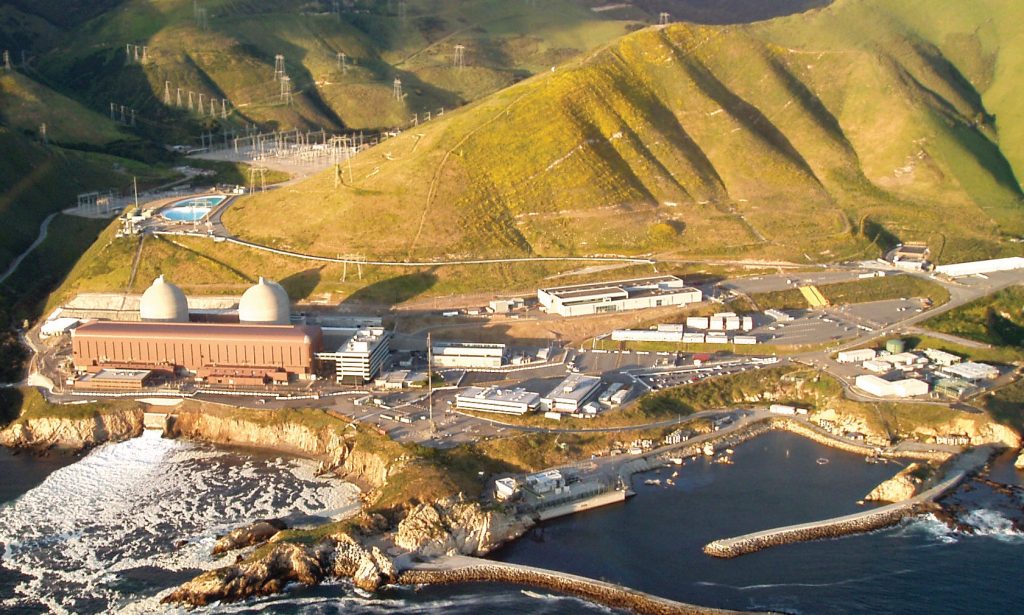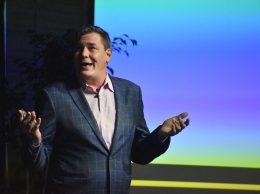SLO County leaders eyeing Diablo Canyon site for green energy
IN THIS ARTICLE
- Central Coast Topic
- Jorge Mercado Author
By Jorge Mercado Friday, March 5th, 2021

With the decommissioning of Diablo Canyon nuclear power plant approaching, a new partnership has been announced to try turn the site into a hub for clean energy on the Central Coast.
REACH—the Regional Economic Action Coalition, an economic planning nonprofit for San Luis Obispo County and northern Santa Barbara County—is working elected officials, county government and community leaders through a memorandum of understanding that aims to create jobs and preserve the natural resources and cultural heritage of the surrounding 12,000 acres of Diablo Lands along the San Luis Obispo County coast. The key players held a news conference March 5 to discuss those plans and other potential uses for the property.
The plan to decommission the nuclear power plant began in 2016. By 2025, both units at the site will be shut down and PG&E will remove nearly everything from the area.
One of the keys to unlocking job growth once decommission is complete is a new bill being authored by State Assemblyman Jordan Cunningham, R-San Luis Obispo, and State Senator John Laird, D-Santa Cruz.
During the March 5 event, Cunningham said the Central Coast has the capacity to be a “clean energy hub.”
The bill, AB 525, would require the California Public Utilities Commission to identify a specific target of three gigawatts by 2030 for offshore wind development. He believes the Diablo Canyon area on the Central Coast would be the perfect place for some of that wind power.
“We have the grid tie-in, we’ve got space in Morro Bay where they’re potentially looking at siting the largest battery storage facility in North America. We need to seize these opportunities. Its jobs and its power we desperately need,” Cunningham said.
“I think that it does offer a chance to use the transmission presented by Diablo Canyon in a very usable way that keeps us away from fossil fuels into the grid, but uses the transmission and provides a boost to the economy,” Laird said.
There is roughly $4 billion in PG&E’s decommissioning trust fund for the plant, Cunningham said. The key will be using it as soon as possible to serve as a “direct economic stimulus for the community,” he added.
“You don’t want that $4 billion spread out over 30 years. If you could pull it off, you want it spent within five or 10 years,” he said.
In 2016, the plan to close the Diablo Canyon nuclear power plant was the catalyst that spurred the creation of REACH, said the group’s CEO, Melissa James.
“We all understand the complexity of the challenge, but we also see the opportunity before us, to shape the future of the existing facilities and infrastructure plus 12,000 acres of pristine land and 14 miles of unspoiled coastline into an attractive mix of land conservation honoring the legacy of the ytt Northern Chumash, sustainable ecotourism, renewable energy, water resilience and cutting edge research and development,” CEO of Reach Melissa James said.
“Ytt” refers to “yak titʸu titʸu yak tiłhini,” the name of the Chumash tribe that is native to the Diablo Canyon area.
Cal Poly San Luis Obispo can also contribute to making the Central Coast a green energy hub.
Cal Poly President Jeffrey Armstrong said the university has invested heavily in research and innovation regarding offshore wind and other renewable energy resources, and graduates have found strong demand for jobs in the field.
“The future of Diablo Canyon represents a gateway to the new frontier of the green economy in renewable energy and blue economy,” Armstrong said.
Clean energy projects might make use of some of the buildings at the current plant, as well as the breakwater, Armstrong said, which would allow some of the decommissioning money to be used for things other than demolition.
U.S. Rep. Salud Carbajal, D-Santa Barbara, said he is “focused on securing all available federal resources to bring renewable energy development to our community and helping clear the way for offshore wind on the Central Coast.”
The county of San Luis Obispo will also have a key role, since it will oversee permits and environmental review for the decommissioning and any future use of the land. On March 2, the Board of Supervisors voted to join the REACH-led memorandum of understanding.
“For the Diablo Canyon power plant, PG&E has opted for decom, which means that the plant moves forward with immediate demolition and the nuclear materials will be securely placed in dry casks for storage, the safest option,” County Supervisor Lynn Compton said. “The county is supportive of this decision because it is in the best interest of our residents and it will also more quickly unlock the potential reuse of the … site and the use of the surrounding lands.”
Aside from job growth, the committee of civic and community leaders wants to preserve the area for the ytt Northern Chumash tribe.
“When REACH invited us to join the MOU, it was an act of respect, and acknowledgement of the descendants of the Pecho coast,” said Scott Lathrop, president of the ytt Northern Chumash nonprofit organization. “We welcome the opportunity to participate in a community process where our culture, traditions and ancestral connection to the Pecho coast can guide the future of our homelands.”
Lathrop said that he believes the plant’s facilities can be repurposed to support research and development and higher education, while also preserving the land.
“Ytt also believes that our homeland surrounding Parcel P, commonly known as North ranch and South ranch, should be under the stewardship of ytt, with a commitment to preserve these pristine lands for future generations,” he said.












